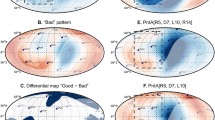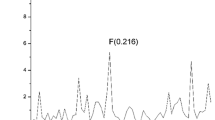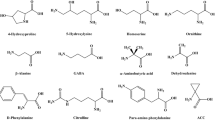Abstract
Crystal structures of neurotensin receptor subtype 1 (NTS1) allowed us to visualize the binding mode of the endogenous peptide hormone neurotensin and its pharmacologically active C-terminal fragment NT(8-13) within the orthosteric binding pocket of NTS1. Beneath the orthosteric binding pocket, we detected a cavity that exhibits different sequences in the neurotensin receptor subtypes NTS1 and NTS2. In this study, we explored this allosteric binding pocket using bitopic test peptides of type NT(8-13)-Xaa, in which the C-terminal part of NT(8-13) is connected to different amino acids that extend into the newly discovered pocket. Our test compounds showed nanomolar affinities for NTS1, a measurable increase in subtype selectivity compared to the parent peptide NT(8-13), and the capacity to activate the receptor in an IP accumulation assay. Computational investigation of the selected test compounds at NTS1 showed a conserved binding mode within the orthosteric binding pocket, whereas the allosteric cavity was able to adapt to different residues, which suggests a high degree of structural plasticity within that cavity of NTS1.




Similar content being viewed by others
References
Carraway R, Leeman SE (1975) The amino acid sequence of a hypothalamic peptide, neurotensin. J Biol Chem 250:1907–1911
Binder EB, Kinkead B, Owens MJ, Nemeroff CB (2001) Neurotensin and dopamine interactions. Pharmacol Rev 53:453–486
Kasckow J, Nemeroff CB (1991) The neurobiology of neurotensin: focus on neurotensin-dopamine interactions. Regul Pept 36:153–164
Fuxe K, Von Euler G, Agnati LF et al (1992) Intramembrane interactions between neurotensin receptors and dopamine D2 receptors as a major mechanism for the neuroleptic-like action of neurotensin. Ann New York Acad Sci 668:186–204
Clineschmidt BV, McGuffin JC, Bunting PB (1979) Neurotensin: antinocisponsive action in rodents. Eur J Pharmacol 54:129–139
Boules M, Liang Y, Briody S et al (2010) NT79: a novel neurotensin analog with selective behavioral effects. Brain Res 1308:35–46. https://doi.org/10.1016/j.brainres.2009.10.050
Schaab C, Kling RC, Einsiedel J et al (2014) Structure-based evolution of subtype-selective neurotensin receptor ligands. Chem Open 3:206–218. https://doi.org/10.1002/open.201402031
Einsiedel J, Held C, Hervet M et al (2011) Discovery of highly potent and neurotensin receptor 2 selective neurotensin mimetics. J Med Chem 54:2915–2923. https://doi.org/10.1021/jm200006c
Harterich S, Koschatzky S, Einsiedel J, Gmeiner P (2008) Novel insights into GPCR–peptide interactions: mutations in extracellular loop 1, ligand backbone methylations and molecular modeling of neurotensin receptor 1. Bioorg Med Chem 16:9359–9368. https://doi.org/10.1016/j.bmc.2008.08.051
Held C, Hübner H, Kling R et al (2013) Impact of the proline residue on ligand binding of neurotensin receptor 2 (NTS2)-selective peptide-peptoid hybrids. ChemMedChem 8:772–778. https://doi.org/10.1002/cmdc.201300054
Pratsch G, Unfried JF, Einsiedel J et al (2011) Radical arylation of tyrosine and its application in the synthesis of a highly selective neurotensin receptor 2 ligand. Org Biomol Chem 9:3746–3752. https://doi.org/10.1039/C1ob05292f
Einsiedel J, Hubner H, Hervet M et al (2008) Peptide backbone modifications on the C-terminal hexapeptide of neurotensin. Bioorg Med Chem Lett 18:2013–2018. https://doi.org/10.1016/j.bmcl.2008.01.110
Richelson E, McCormick DJ, Pang Y-P, Phillips KS (2009) Peptide analogs that are potent and selective for human neurotensin preceptor subtype 2. US Patent US20110263507A1
Cusack B, McCormick DJ, Pang YP et al (1995) Pharmacological and biochemical profiles of unique neurotensin 8-13 analogs exhibiting species selectivity, stereoselectivity, and superagonism. J Biol Chem 270:18359–18366
Tourwe D, Iterbeke K, Török G, et al (2002) Pro10-Tyr11 substitutions provide potent or selective NT(8-13) analogs. In: Benedetti E, Pedone C (eds) Peptides 2002, Proc 27th European Peptide Symposium, Napoli, Italy, 31 Aug–6 Sept 2002, pp 304–305
Valant C, Robert Lane J, Sexton PM, Christopoulos A (2012) The best of both worlds? Bitopic orthosteric/allosteric ligands of g protein-coupled receptors. Ann Rev Pharmacol Toxicol 52:153–178. https://doi.org/10.1146/annurev-pharmtox-010611-134514
Kruse AC, Ring AM, Manglik A et al (2013) Activation and allosteric modulation of a muscarinic acetylcholine receptor. Nature 504:101–106. https://doi.org/10.1038/nature12735
Tan Q, Zhu Y, Li J et al (2013) Structure of the CCR5 chemokine receptor-HIV entry inhibitor maraviroc complex. Science 341:1387–1390. https://doi.org/10.1126/science.1241475
Wu B, Chien EY, Mol CD et al (2010) Structures of the CXCR4 chemokine GPCR with small-molecule and cyclic peptide antagonists. Science 330:1066–1071. https://doi.org/10.1126/science.1194396
Egloff P, Hillenbrand M, Klenk C et al (2014) Structure of signaling-competent neurotensin receptor 1 obtained by directed evolution in Escherichia coli. Proc Natl Acad Sci USA 111:655–662. https://doi.org/10.1073/pnas.1317903111
White JF, Noinaj N, Shibata Y et al (2012) Structure of the agonist-bound neurotensin receptor. Nature 490:508–513. https://doi.org/10.1038/nature11558
Hubner H, Haubmann C, Utz W, Gmeiner P (2000) Conjugated enynes as nonaromatic catechol bioisosteres: synthesis, binding experiments, and computational studies of novel dopamine receptor agonists recognizing preferentially the D(3) subtype. J Med Chem 43:756–762
Jordan M, Schallhorn A, Wurm FM (1996) Transfecting mammalian cells: optimization of critical parameters affecting calcium-phosphate precipitate formation. Nucleic Acids Res 24:596–601
Lowry OH, Rosebrough NJ, Farr AL, Randall RJ (1951) Protein measurement with the Folin phenol reagent. J Biol Chem 193:265–275
Cheng Y, Prusoff WH (1973) Relationship between the inhibition constant (K1) and the concentration of inhibitor which causes 50 per cent inhibition (I50) of an enzymatic reaction. Biochem Pharmacol 22:3099–3108
Liu H, Hofmann J, Fish I et al (2018) Structure-guided development of selective M3 muscarinic acetylcholine receptor antagonists. Proc Natl Acad Sci 115:12046–12050. https://doi.org/10.1073/pnas.1813988115
Weichert D, Kruse AC, Manglik A et al (2014) Covalent agonists for studying G protein-coupled receptor activation. Proc Natl Acad Sci USA 111:10744–10748. https://doi.org/10.1073/pnas.1410415111
Šali A, Blundell TL (1993) Comparative protein modelling by satisfaction of spatial restraints. J Molec Biol 234:779–815. https://doi.org/10.1006/jmbi.1993.1626
Hiller C, Kling RC, Heinemann FW et al (2013) Functionally selective dopamine D2/D3 receptor agonists comprising an enyne moiety. J Med Chem 56:5130–5141. https://doi.org/10.1021/jm400520c
Hornak V, Abel R, Okur A et al (2006) Comparison of multiple Amber force fields and development of improved protein backbone parameters. Proteins 65:712–725. https://doi.org/10.1002/prot.21123
van der Spoel D, Lindahl E, Hess B et al (2005) GROMACS: fast, flexible, and free. J Comput Chem 26:1701–1718. https://doi.org/10.1002/jcc.20291
Hess B, Kutzner C, van der Spoel D, Lindahl E (2008) GROMACS 4: algorithms for highly efficient, load-balanced, and scalable molecular simulation. J Chem Theor Comput 4:435–447. https://doi.org/10.1021/ct700301q
Möller D, Kling RC, Skultety M et al (2014) Functionally selective dopamine D2, D3 receptor partial agonists. J Med Chem 57:4861–4875. https://doi.org/10.1021/jm5004039
Goetz A, Lanig H, Gmeiner P, Clark T (2011) Molecular dynamics simulations of the effect of the G-protein and diffusible ligands on the β2-adrenergic receptor. J Molec Biol 414:611–623. https://doi.org/10.1016/j.jmb.2011.10.015
Schrodinger, LLC (2010) The PyMOL molecular graphics system, version 1.3r1. Schrodinger, LLC, New York
Pettersen EF, Goddard TD, Huang CC et al (2004) UCSF Chimera—a visualization system for exploratory research and analysis. J Comput Chem 25:1605–1612. https://doi.org/10.1002/jcc.20084
Author information
Authors and Affiliations
Corresponding author
Additional information
Publisher’s note
Springer Nature remains neutral with regard to jurisdictional claims in published maps and institutional affiliations.
This paper belongs to the Topical Collection Tim Clark 70th Birthday Festschrift
Electronic supplementary material
ESM 1
(DOCX 10271 kb)
Rights and permissions
About this article
Cite this article
Kling, R.C., Burchardt, C., Einsiedel, J. et al. Structure-based exploration of an allosteric binding pocket in the NTS1 receptor using bitopic NT(8-13) derivatives and molecular dynamics simulations. J Mol Model 25, 193 (2019). https://doi.org/10.1007/s00894-019-4064-x
Received:
Accepted:
Published:
DOI: https://doi.org/10.1007/s00894-019-4064-x




